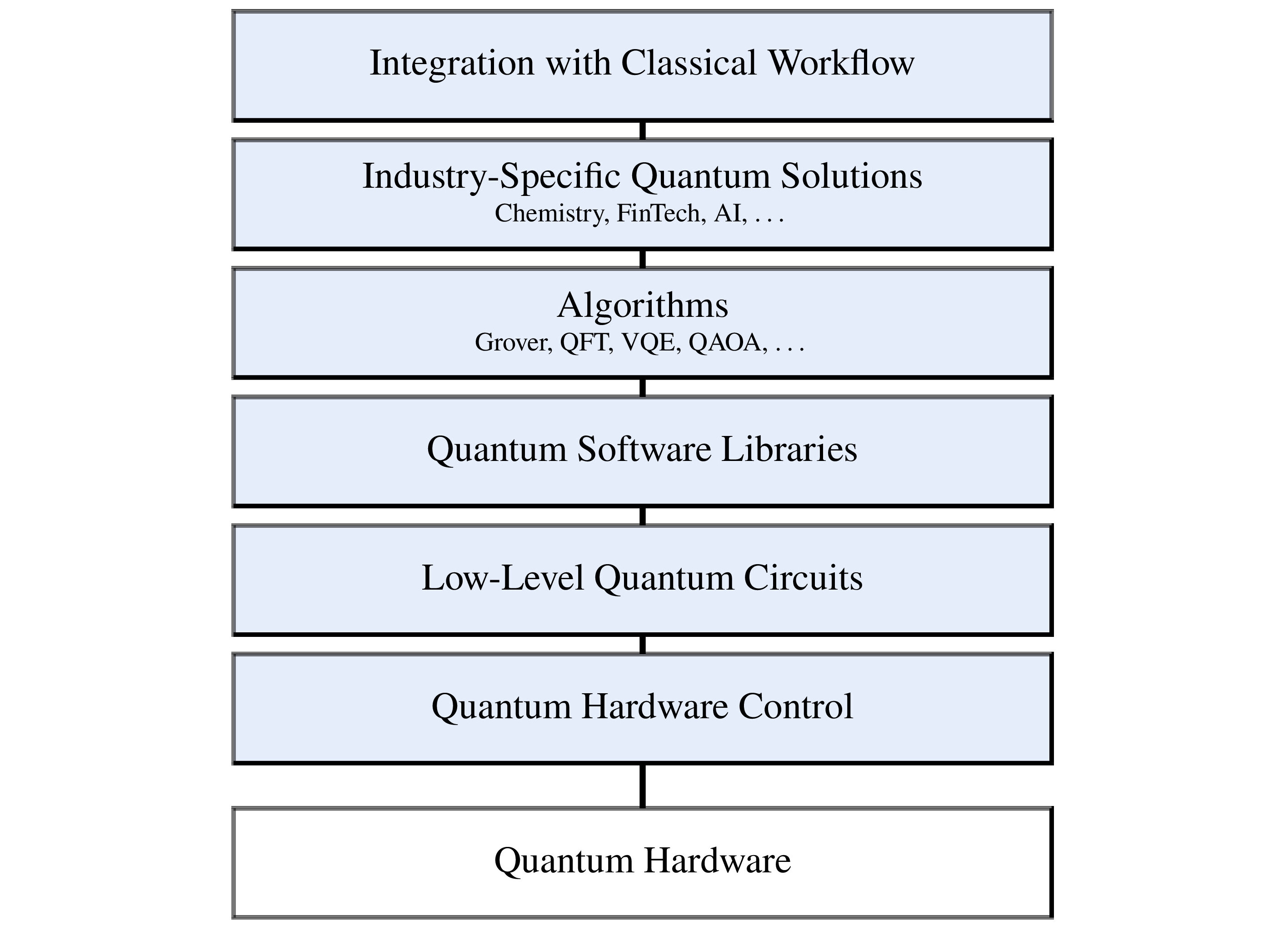14.4 Software
If a quantum computer is to be programmable, it must have software, as discussed in section 11.7. More than that, your chosen system must have a complete software stack of runtime facilities and development tools, as shown in the upper portion of Figure 14.1. software stack
Note: this is the same stack shown in Figure 11.23.

- Do you prefer working with new, semi-proprietary languages for quantum computing, or would you reuse existing skills in popular languages such as Python instead?
- Does your staff already have software engineering skills in Python?
- Have you surveyed the current development platforms for quantum computing? Does your staff have expertise in Cirq or Qiskit? Cirq Qiskit
- Have you assessed the breadth of functionality and algorithms implemented in the stack’s Quantum Software Libraries and Algorithms...

